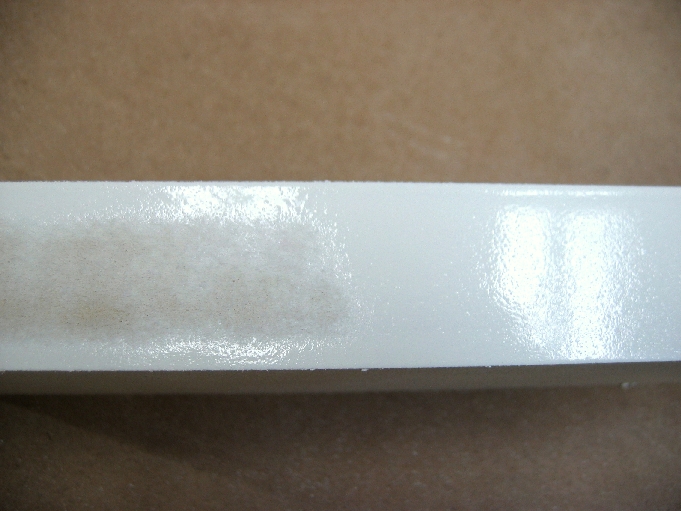Louis - the data sheet they sent you does say to sand the face of raw MDF with 320 or to use 180 if it's pre-primed from the factory (UV filled). You would know if you're using pre-primed/sealed MDF. The sheet goes on to say that you should pre-seal the MDF with a coat of highly thinned Magnalac if it's a lower density product that gets very fuzzy when sanded. That's an extra step and I don’t know anybody that does it. Let me point out that the data sheet does not say to work your way through all the grits up to 320. It says to use 320 (only). That's a very important distinction that will save a LOT of time and material immediately.
It may be that the technique outlined in the data sheet is the best approach. It's also possible there's a better way. In this thread some experienced finishers offered their advice and they use different approaches to achieve the same results. That tells me there’s more than one to get the job done. The one thing most everyone seems to agree on is that 320 is too fine.
Chances are some of the approaches are more cost-effective than others in terms of efficiency and/or cost of materials. Though sometimes a savings in material is offset by an expense in labor (and vice versa). It's a balancing act.
At this point I’d recommend you do some testing to find the approach that is most cost effective and produces the standard of quality you need to make the customer happy. There are some variables that can affect what will work best for you including the grade of MDF you use, the techniques used by the people doing the sanding, the type of the sandpaper, the techniques the spray operator uses, etc..
Start by sanding half of a 4x8 panel with 150 and the other half with 220. Do not work your way through all the grits - use these single grits ONLY. Then sand the edges on one half with 220 and use 320 on the other half. Perform the work quick and easy – do not take extra time to make it better than usual.
Now spray the whole panel with a coat of primer thinned about 20% (or more if that’s your standard procedure). Sand the panel with 220 or 320 to smooth and spray another coat of primer (thinned per your preference). Sand with 320 to smooth and topcoat.
Let the panel dry for 3 days in a warm, well ventilated space and then evaluate the visual difference between the 2 halves. Do an adhesion test on each half. Choose the side that looks the best, adheres well, and takes the least amount of work/time. Start using that process on a regular basis but keep an eye on the quality and labor hours. Do another adhesion test in couple weeks just to follow up. As a matter of routine, make sure the sanding crew isn’t using worn out sandpaper.
Find out if your company always orders the same quality MDF - some are denser than others and are easier to paint (less coats of primer). The standardized process you come up with will have to adapt if your supplier sends you a different grade of MDF one day, so you should be familiar with what you’re getting and how it behaves from a machining and finishing perspective.
Lastly, if you get a chance, report back on the results of your testing and the process that works best for you.

